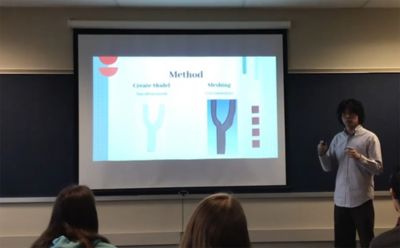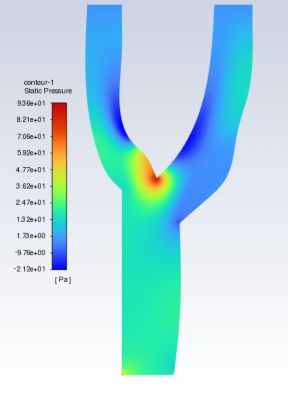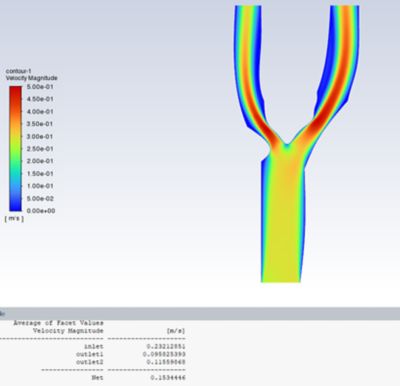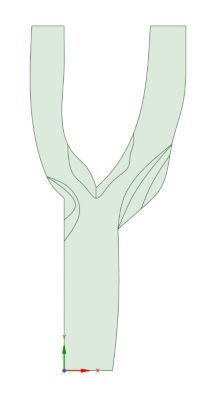-
United States -
United Kingdom -
India -
France -
Deutschland -
Italia -
日本 -
대한민국 -
中国 -
台灣
-
Ansys s'engage à préparer les étudiants d'aujourd'hui à la réussite, en leur fournissant gratuitement un logiciel de simulation.
-
Ansys s'engage à préparer les étudiants d'aujourd'hui à la réussite, en leur fournissant gratuitement un logiciel de simulation.
-
Ansys s'engage à préparer les étudiants d'aujourd'hui à la réussite, en leur fournissant gratuitement un logiciel de simulation.
-
Contactez-nous -
Carrières -
Étudiants et universitaires -
-
S'inscrire -
Déconnexion -
Espace client -
Support -
Communautés partenaires -
Contacter le service commercial
Pour les États-Unis et le Canada
+1 844.462.6797
-
ANSYS BLOG
December 2, 2022
High School Student Achieves Perfect Score on AP Capstone Project with Simulation
Chris Zhou, a current senior at McDowell High School in Erie, Pennsylvania, is among just 306 students across the world to attain a perfect score on his AP Capstone Project, making him part of just 1% to achieve such a milestone.
With those odds, it’s no surprise that Zhou chose simulation to research his AP project. Simulation is all about odds, probability, and possibility.
To embark on his project, CFD Analysis on the Carotid Artery Bifurcation, Zhou downloaded Ansys Student — free student software made available through the Ansys Academic Program — to investigate the odds of artery blockage.
With Ansys Student, Zhou accessed Ansys Fluent computational fluid dynamics (CFD) simulation and Ansys SpaceClaim 3D modeling software to analyze and model blood flow in the carotid artery.
Today, with a perfect score, real-world simulation experience, and a better understanding of hemodynamics, Zhou is deciding which college to pursue his studies and explore career possibilities, which at this point in the analysis, appear limitless.

High school student Chris Zhou shown here presenting his AP Capstone project, CFD Analysis on the Carotid Artery Bifurcation, to his AP Research class last year.
Simulating to Prevent Artery Plaque
Last year, Zhou began his junior year with a full course load, yet just one class would prove to be life changing: AP Research. The class is part of the AP Capstone program, a diploma program offered through College Board to develop students’ skills in research, analysis, writing, and more.
The core requirement of the class is for students to select a topic to research in depth throughout the year and then share their findings at the end of the term with a presentation and paper.
At the time, Zhou was interested in the medical field and participating in a job-shadowing opportunity at nearby UPMC Hamot Hospital. Through this experience, Zhou was exposed to several labs, piquing his interest in blood flow.
Coupled with this, Zhou’s father, Jun Zhou, is an engineering professor at Penn State Behrend and familiar with CFD. With encouragement from his dad, Zhou decided to use CFD to dive deeper into artery blood flow, particularly the carotid artery bifurcation. This is the point where the common carotid artery ends and splits into the internal and external carotid arteries that go on to supply blood to the head and neck. To begin, he explored available CFD tools online and discovered Ansys Student for free.

A base model of the carotid artery was simulated in Ansys Fluent.

Ansys Fluent simulation illustrates the carotid artery’s velocity flow during stage three of plaque buildup.
Robert Hodgson, Zhou’s AP teacher — who also encouraged his research — commends the program for offering students these tools.
“This enables students to do work that they otherwise would not be able to do without access to much more expensive equipment,” says Hodgson. “It increases the accessibility and ability for students to do high-level work like Chris did, which would not be possible without access to programs like this.”
For Zhou’s project, he used CFD to observe the carotid arteries of the neck, which tend to have a lot of plaque buildup, he says.
“The main issue is that modern imaging techniques such as MRI or CT scans sometimes can’t fully or accurately depict if there is plaque buildup within these veins,” says Zhou. “So, instead I used CFD and Ansys to build a two-dimensional model and then run simulations of the blood flowing through the vessel.”
In addition to working on the project during class, Zhou conducted research at home and also participated in Cornell’s popular edX course, “A Hands-on Introduction to Engineering Simulation,” which includes online simulation resources and tutorials for supplementary learning outside of the classroom.
Due to privacy restraints, time constraints, and limitations through the local Institutional Review Board (IRB) — which requires projects to meet certain guidelines of research — Zhou could not use patient-specific data for his testing. Instead, Zhou conducted his research on previous studies and publicly available models.
A main challenge in investigating the carotid artery bifurcation, he says, is that the vessels are thin and small and plaque buildup accumulates over a very long time, which makes it difficult to physically monitor, test, or see.
After reading past examinations, Zhou learned that previous researchers used CFD to build more accurate models, frequently based on actual models gained from hospitals and patient case studies. By comparing the improved models to actual cases, researchers determined patterns in blood velocity pressure and things such as wall shear stress. These analyses enabled them to determine if the patient was in fact building up plaque or developing any other complications.
To expand upon these concepts, Zhou used Fluent to create geometry, meshing, and boundary conditions to make predictively accurate models to understand blood flow characteristics and study the correlations between healthy flowing arteries and arteries in which blockage is forming.
The class runs the length of the school year, so after nearly 10 months of research, Zhou submitted his completed project to College Board in late May. The program requires a two-part submission, consisting of a 20-minute research presentation — 15 minutes for the presentation and five minutes for an oral defense from the panel of judges— and a paper of approximately 4,000 – 5,000 words.
He received his first installment of good news in late July, learning his project landed a five out of the one-to-five general scoring range, but did not know specifics such as any problems missed or minor points deducted. However, in September, Zhou received an additional e-mail from College Board informing him of his perfect score.
Simulating for the Future
Although Zhou is not sure which college he will attend, he has a clearer idea of what he will pursue and is applying to Ivy League schools, including Harvard University, the University of Pennsylvania, and Cornell University.
“Originally, I wasn’t sure what I wanted to do, torn between either going into a medical-based career or maybe more of an engineering aspect,” says Zhou. “But with this project, I was able to combine the two into one area, having the medical part of blood vessels and hemodynamics, and the engineering part using Ansys software and computer simulation. This really helped me get a better idea of what I would like to do in the future and how I can blend both of my interests.”

This image demonstrates the cumulative overlap of all stages and models of plaque buildup in the carotid artery.
Based on his parallel passions, Hodgson and Zhou’s father have encouraged him to consider a dual doctorate and Ph.D. track incorporating biology and other science, technology, engineering, and math (STEM) subjects so he can enter the medical field as a practicing physician, while pursuing research and experiments.
With no prior experience using simulation, Zhou felt at ease using the tools crediting the Cornell edX course, Ansys, his dad, and teacher for the support and resources. His dad, however, passes any credit over to the Ansys Academic Program.
“I think Ansys made this all possible for a high school student and did a great job,” says Jun Zhou. “Otherwise, I don’t see that it would be possible at this level but Ansys provides these tools to students and enables them to think from a big-picture view and that stimulates further interest.”
Zhou agrees with his dad, and now that he has experienced simulation firsthand, he’s a big proponent of it for the future of healthcare.
“A lot of the times in the medical field, research or tests need to be run on actual subjects, which places constraints on if you can find the subject and if they’re willing to do the experiment,” he says. “But with simulation you take all of that out of play and can run everything by yourself or with a couple of colleagues and a lab where everything is controlled by you and you can just keep retrying and retesting until you think you get to your final solution.”
He’s also grateful for the Ansys Academic Program for supplying simulation to students at no cost, which gives many students like him valuable opportunities.
“If I tried to do this without simulation, I would need access to things only found in hospitals used by professionals such as expensive imaging technology, MRI machines, or CT scanners,” he says. “It wouldn’t be feasible, especially for someone at my level. But this program was completely free and very accessible. I’m just a typical high school student who was able to run all of these tests and simulations from the comfort of my own home, even on my own computer. I think that’s really nice because if any student has the passion and wants to do this, they have the opportunity to.”
Visit the Ansys Academic page to learn more about Ansys student incentives, free software downloads, and additional resources.










